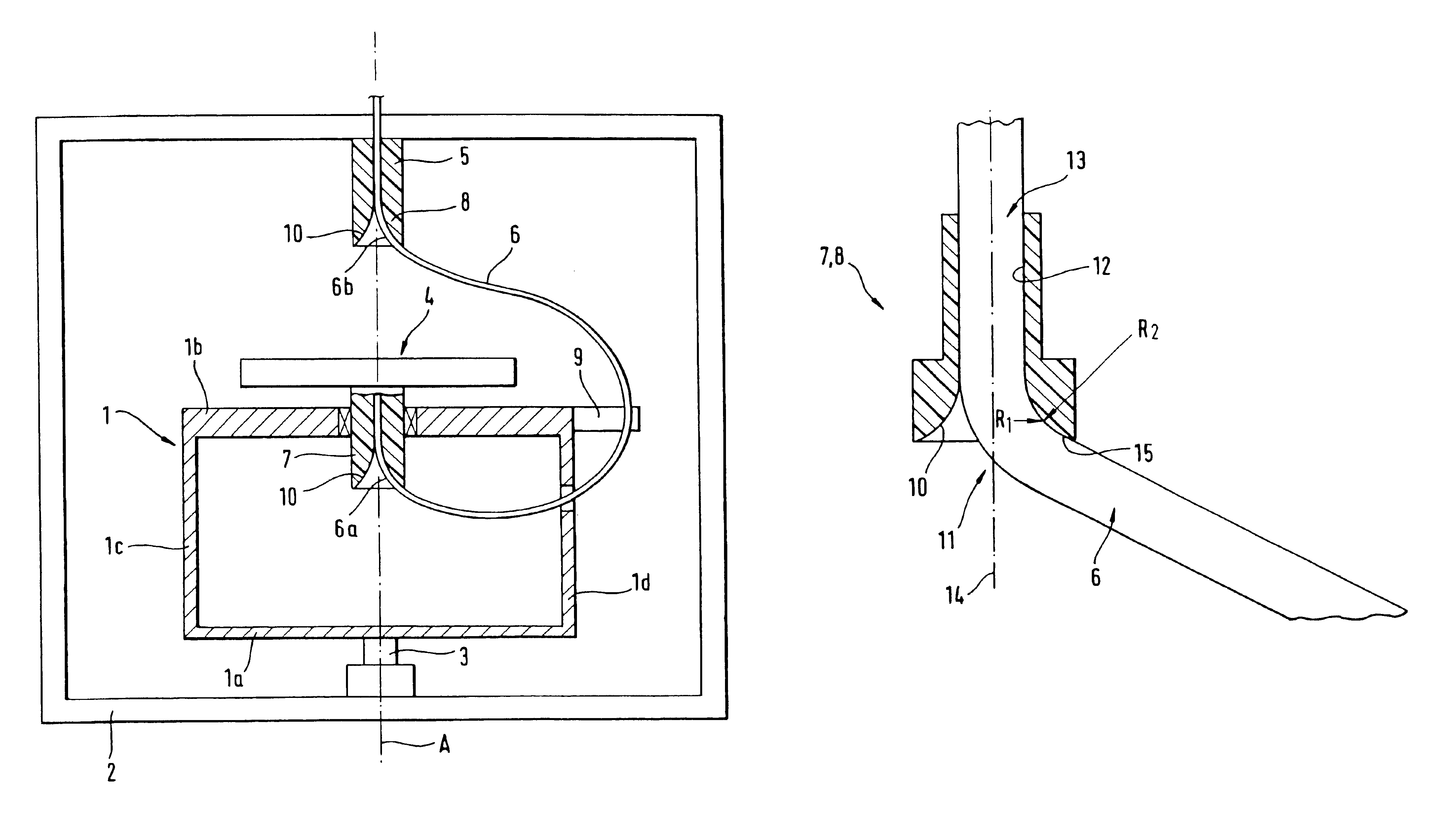Centrifuge with a fluid line guide element having a curved bearing surface
a technology of fluid line guide element and centrifuge, which is applied in the direction of centrifuge, blood transfusion, etc., can solve the problems of affecting the operation of centrifuge, so as to achieve high rotational speed, low mechanical stress, and easy manufacturing. easy and inexpensive
- Summary
- Abstract
- Description
- Claims
- Application Information
AI Technical Summary
Benefits of technology
Problems solved by technology
Method used
Image
Examples
Embodiment Construction
A representative embodiment of the present invention is described in greater detail below with reference to the drawings.
FIG. 1 shows a schematic diagram of a continuous-flow centrifuge that does not use face seals for centrifuging a biological fluid, in particular blood, which corresponds in design and function to the centrifuge described in German Patent 32 42 541 A1. The continuous-flow centrifuge has a rotating frame 1 with a lower supporting plate 1a and an upper supporting plate 1b plus two side parts 1c, 1d. Rotating frame 1 is rotatably mounted on a stationary frame 2 to rotate about a vertical axis 3, and it is driven by a drive unit (not shown in FIG. 1) at a rotational speed n.sub.1. A separation unit 4 in the form of a cylindrical chamber is mounted on the upper supporting plate 1b of the rotating frame 1 so it can rotate about the axis of rotation of rotating frame 1. Separation unit 4 is driven by a drive unit (not shown) in the same direction of rotation as the rotati...
PUM
 Login to View More
Login to View More Abstract
Description
Claims
Application Information
 Login to View More
Login to View More - R&D
- Intellectual Property
- Life Sciences
- Materials
- Tech Scout
- Unparalleled Data Quality
- Higher Quality Content
- 60% Fewer Hallucinations
Browse by: Latest US Patents, China's latest patents, Technical Efficacy Thesaurus, Application Domain, Technology Topic, Popular Technical Reports.
© 2025 PatSnap. All rights reserved.Legal|Privacy policy|Modern Slavery Act Transparency Statement|Sitemap|About US| Contact US: help@patsnap.com



